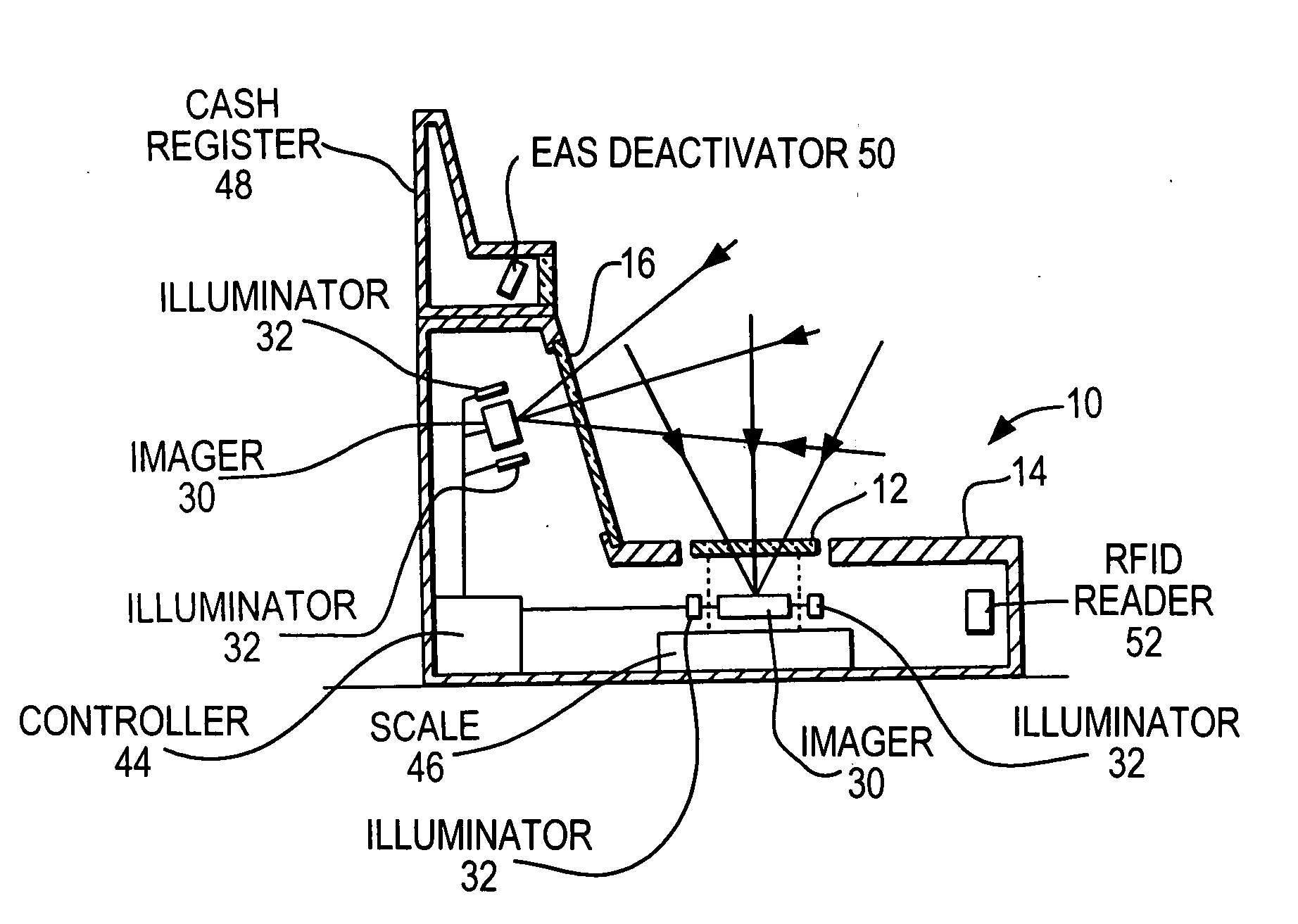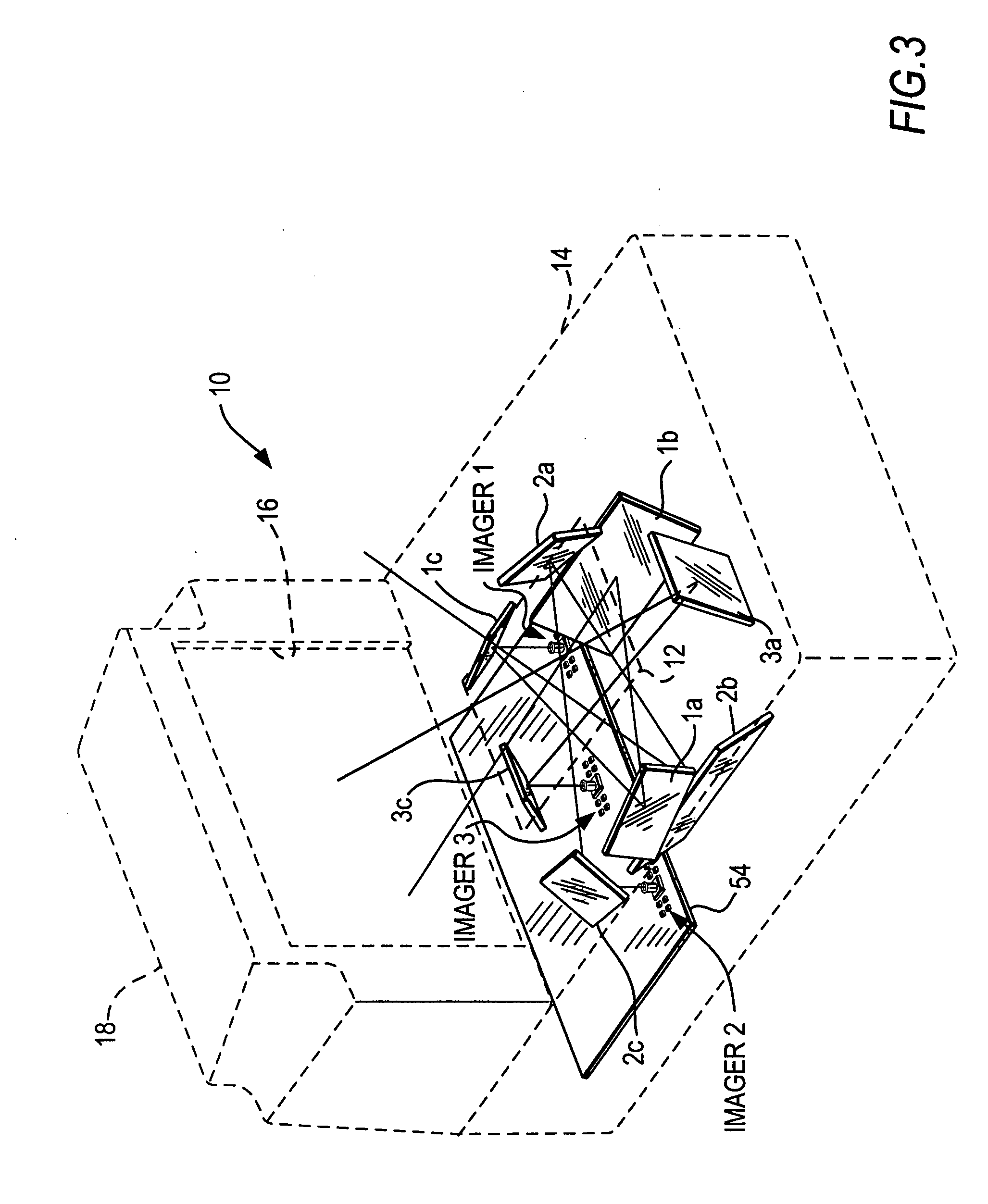Imaging reader with plural solid-state imagers for electro-optically reading indicia
a solid-state imager and imager technology, applied in the direction of instruments, sensing record carriers, visual presentations, etc., can solve the problems of slowing transaction processing, reducing productivity, and reducing the difficulty of blind-aiming symbols, so as to reduce the cost of imagers
- Summary
- Abstract
- Description
- Claims
- Application Information
AI Technical Summary
Benefits of technology
Problems solved by technology
Method used
Image
Examples
Embodiment Construction
[0027]FIG. 1 depicts a dual window, bi-optical, point-of-transaction workstation 10 used by retailers to process transactions involving the purchase of products bearing an identifying target, such as the UPC symbol described above. Workstation 10 has a generally horizontal window 12 set flush with, or recessed into, a countertop 14, and a vertical or generally vertical (referred to as “vertical” or “upright” hereinafter) window 16 set flush with, or recessed into, a raised housing portion 18 above the countertop.
[0028]As schematically shown in FIG. 2, a plurality of solid-state imagers 30, each including an illuminator 32, are also mounted at the workstation, for capturing light passing through either or both windows from a target which can be a one- or two-dimensional symbol, such as a two-dimensional symbol on a driver's license, or any document, as described below. Each imager 30 is a solid-state area array, preferably a CCD or CMOS array, of submegapixel size. Each imager 30 pre...
PUM
 Login to View More
Login to View More Abstract
Description
Claims
Application Information
 Login to View More
Login to View More - R&D
- Intellectual Property
- Life Sciences
- Materials
- Tech Scout
- Unparalleled Data Quality
- Higher Quality Content
- 60% Fewer Hallucinations
Browse by: Latest US Patents, China's latest patents, Technical Efficacy Thesaurus, Application Domain, Technology Topic, Popular Technical Reports.
© 2025 PatSnap. All rights reserved.Legal|Privacy policy|Modern Slavery Act Transparency Statement|Sitemap|About US| Contact US: help@patsnap.com



